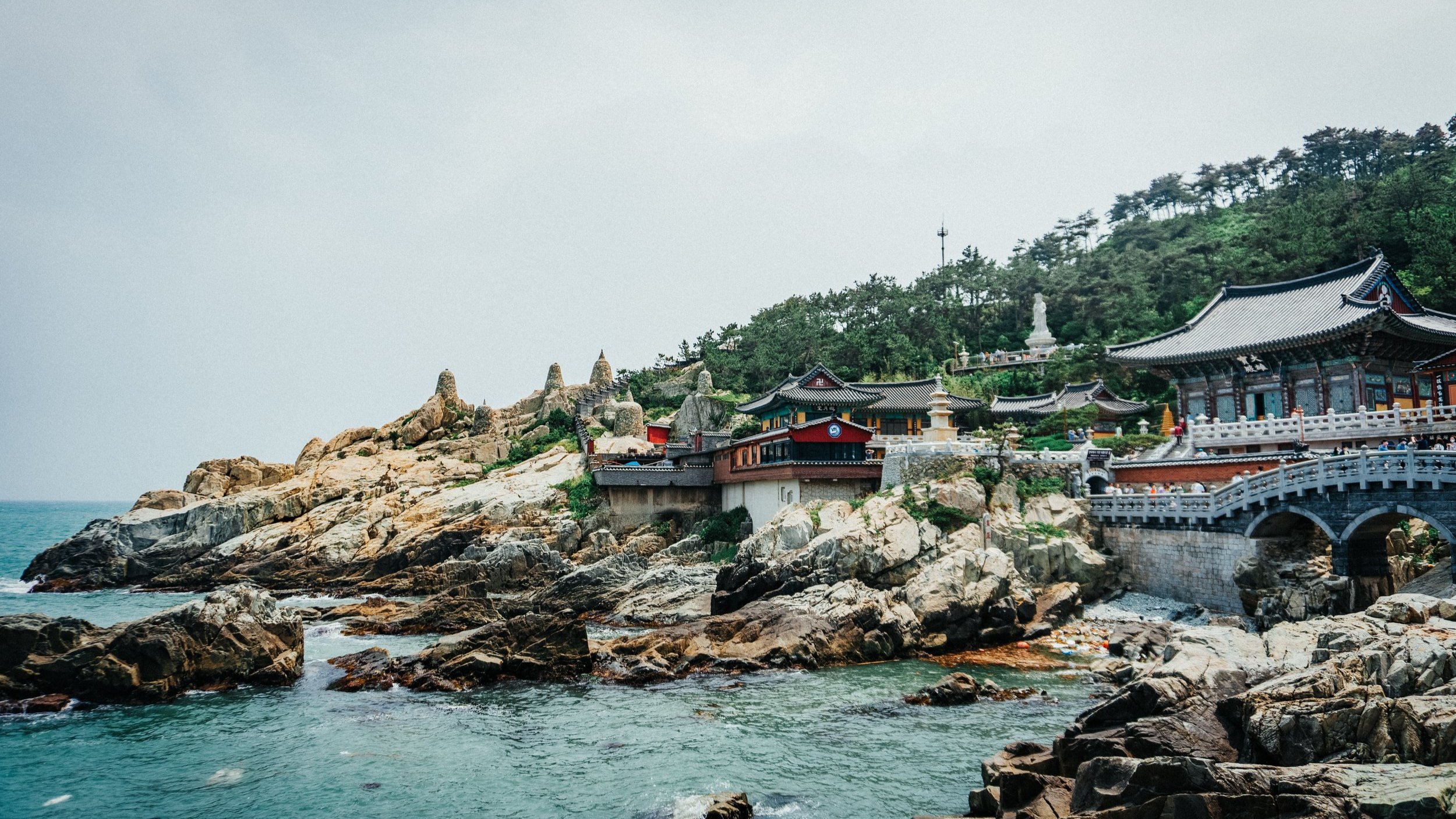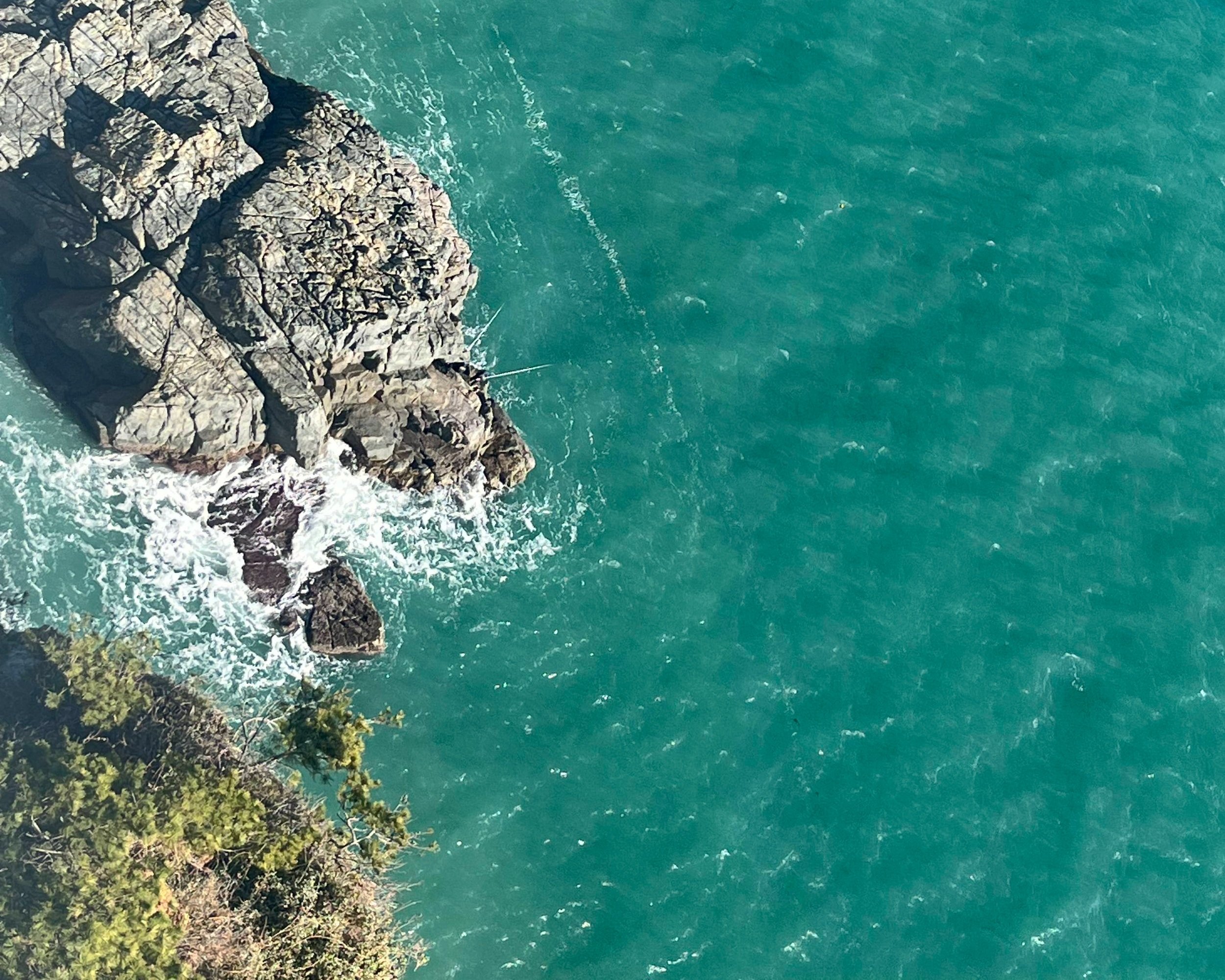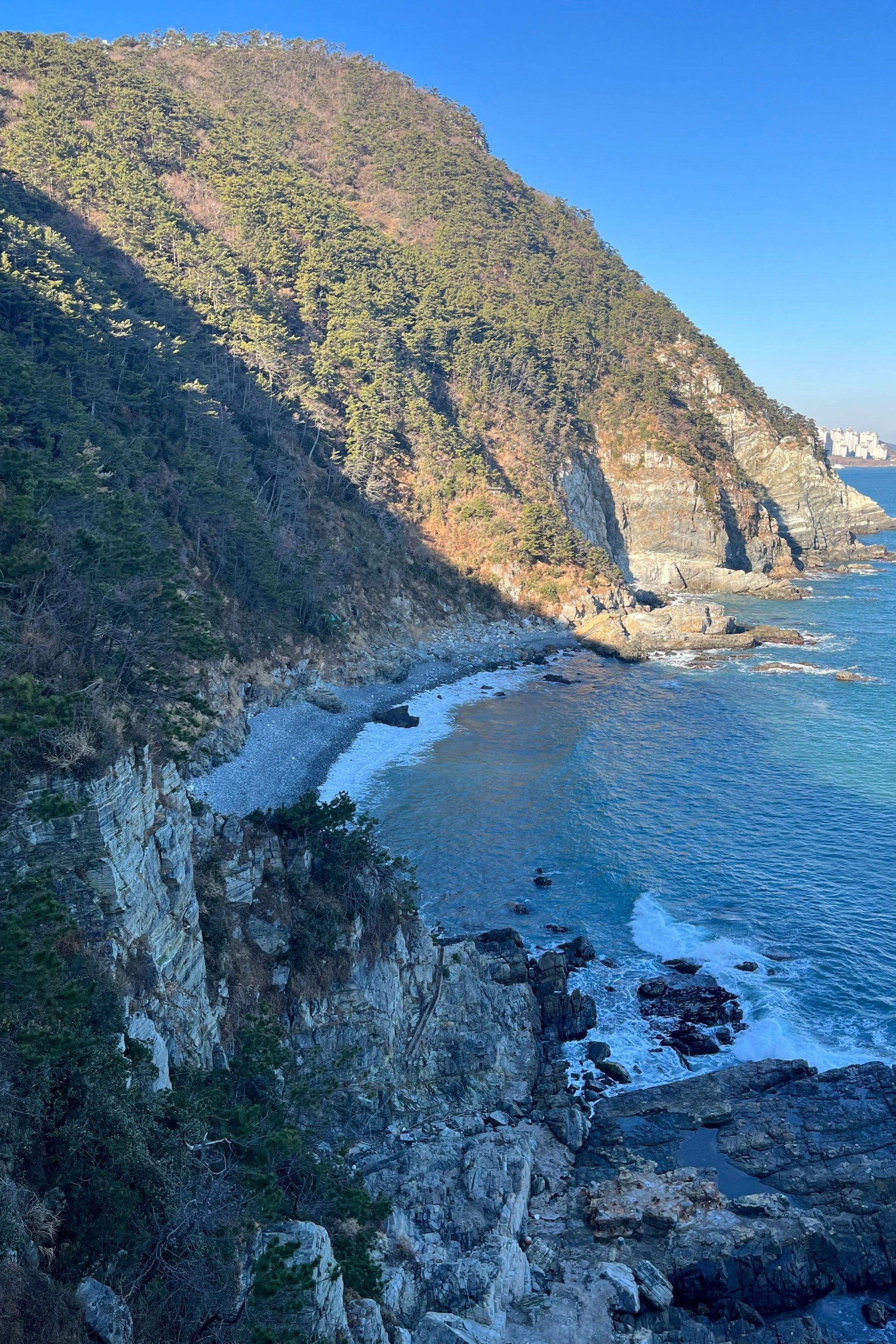Here is Part 2 of Pree’s adventures in South Korea and this time, it’s on Busan! If you haven’t read Part 1 where I write about my experience in Seoul, it’s here. Busan is known for its beaches, mountains as well as temples. (It’s also known for being the birthplace of Jungkook and Jimin from BTS.) Since I was only in Busan for about 2-3 days, I will just be focusing on 2 attractions that I had a chance to fully experience.
I was in South Korea in the December-January period in 2021. From the time I first stepped foot in Seoul till I went to Busan, I was freezing, especially since I am used to Singapore’s perpetually hot weather. It felt like I was always fending off frostbite whenever I took off my gloves to maybe, use my phone or munch on something while walking. I had finally found relief when I reached Busan, thankfully. Seoul was frequently experiencing sub-zero temperatures then, while that of Busan’s were tamer, going up to even 10℃.
Taejongdae
Bird’s Eye View of the Observation Deck at Taejongdae
Busan definitely felt different from Seoul. Though it had similar urban metropolitan features, the overall atmosphere did feel more homely and rustic. This feeling reached its epitome when I visited Taejongdae. Taejongdae is a natural coastal park boasting magnificent views from great vantage points.
It’s most definitely not a small area and so you can get on the Danubi Circular Train to get around the area. It runs in a circular direction stopping at 3 spots and you can hop in/ hop off at any of those stops. For adults, the train costs about 3 000KRW (approx. US$2.50) and you can get them at the ticket office at the park entrance. The train operates from 9:20am to 5:30pm and runs in 15 minutes intervals.
Danubi Train
The first stop is the Observation Deck. It is a beautiful vantage point to watch the pristine waters swish against rocky slopes.
There is also a store where you can get some snacks and drinks. The deck can be considered an appetizer. I just got myself some churros and just enjoyed the breeze.
Fun Fact: At the observatory, you can view as far as Oryukdo Islets and Tsushima Island when the sky is clear.
Yeongdo Lighthouse
Next is the main course, Yeongdo Lighthouse. The lighthouse has multiple levels to it thus giving you several vantage points all connected by exhausting flights of stairs. But, trust me, the views are worth it.
The stairs also allow you to reach the rocky terrains below that the waves crash against. Fair warning, you do have to grapple and manoeuvre around the irregular terrain so dress appropriately and be careful. Naturally, I climbed and walked around the area to my heart’s content.
The breezy air coupled with what I could only describe as truly visually therapeutic sights, urged me to just sit there, take everything in and etch it into my brain. I even video called my dad and showed him around as well.
What excited me was the group of lovely Korean ahjumma on one side of the rocky terrain selling rows of live seafood like octopus and clams. You can pick your choice and they will serve it to with a selection of sauces, chilli, kimchi and sesame oil.
You get to sit on a ledge overlooking the sea and enjoy your delicious meal with either soju or beer. Another warning, you have to enjoy it live… as in the octopus would still be moving.
If you’re not into that, you can just get a beer or try some of the other seafood that doesn’t move. But of course, I suggest being open-minded!
Lastly, as a palate cleanser/dessert, the train takes you to Taejongsa Temple. It is a humble temple with very calming natural surroundings.
However, the best time to visit this temple would be during summer between late June and early July as that’s when the Hydrangea Flower Cultural Festival is held yearly.
Taejongsa Temple
Gamcheon Culture Village
We can’t talk about Busan without talking about its Gamcheon Culture Village. Gamcheon Culture Village a colony on it own with houses built in a layered, labyrinth-fashion all connected by staircases. When you look at it from its vantage point, you’ll see that its built upon the ascending foothills of a coastal mountain, thus earning its nickname, "Machu Picchu of Busan." Many alleys here are vibrantly decorated with murals and sculptures designed by the residents.
Gamcheon Culture Village
This village has a very inspiring story behind it. Refugees had settled in Gamcheon Village during the Korean War and cultivated the mountainous region to make a living. From a dilapidated slum, its now a beautiful and leading tourist attraction in Busan. In 2009, students, artists, and residents decorated the village as a part of the Village Art Project which kickstarted a series of urban regeneration projects thus earning this community various awards from domestic and international organisations.
Handicrafts Shop
Museum
Follow the stamp map that you can get at the village information center to complete the alley tour. Make sure to visit the museum to learn more about its history and then you can walk along the alleys to various unique cafes, restaurants and shops. My favourite was this cafe that sold the prettiest handmade jewellery that looked to be family run. The best part was that I could play with their dog. Needless to say, I was very happy.
If these refreshing experiences interest you, let us, the APERTUS team know and we’ll take care of bringing you to South Korea. And please do spend a little more than 3 days at Busan.













